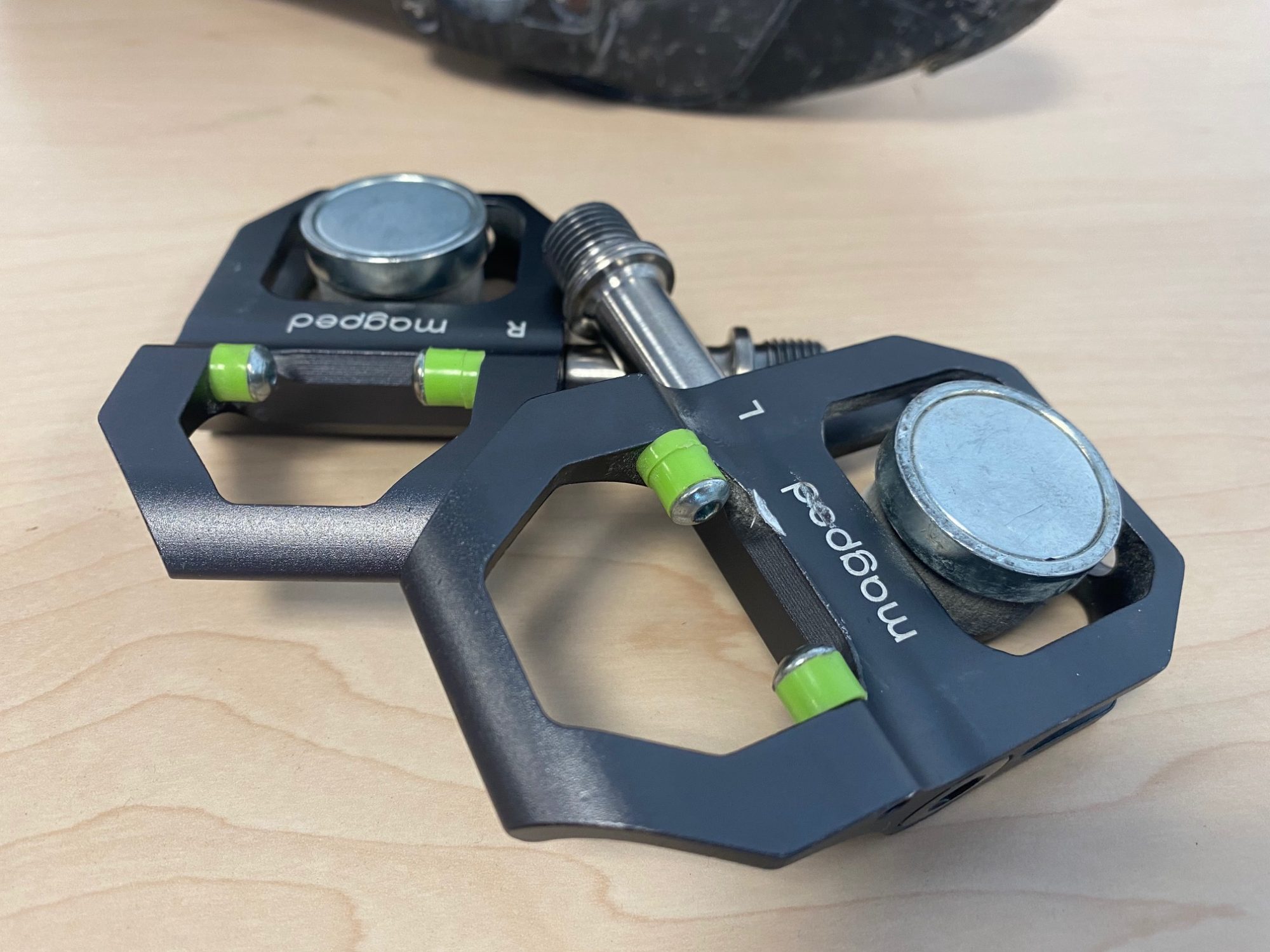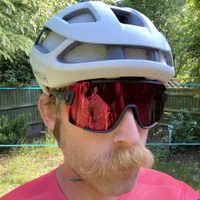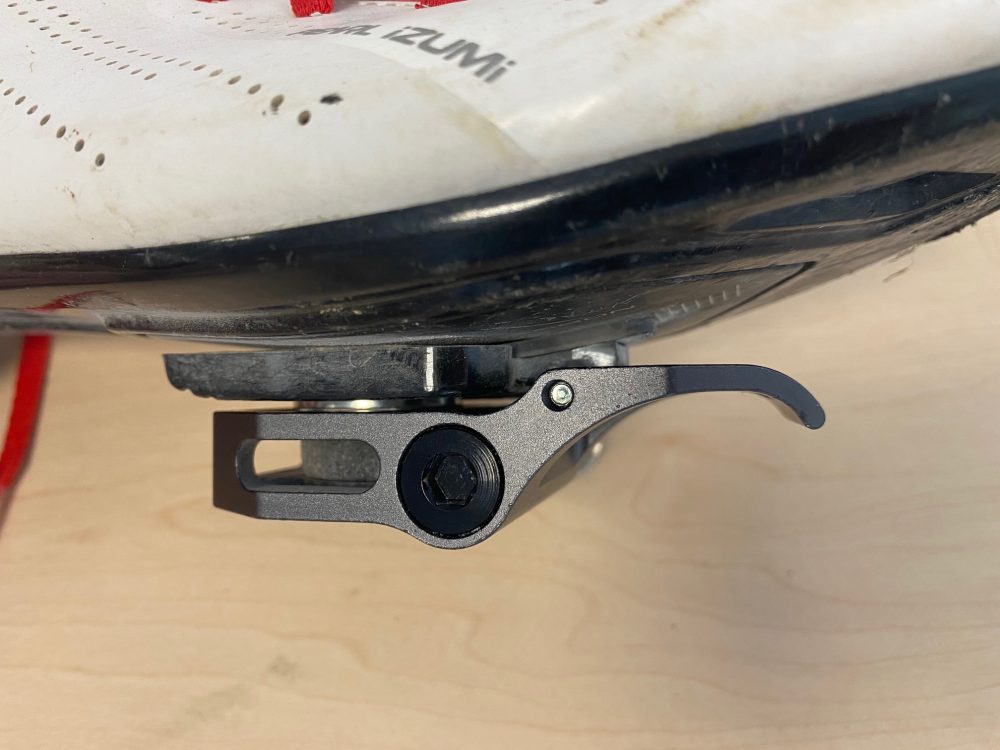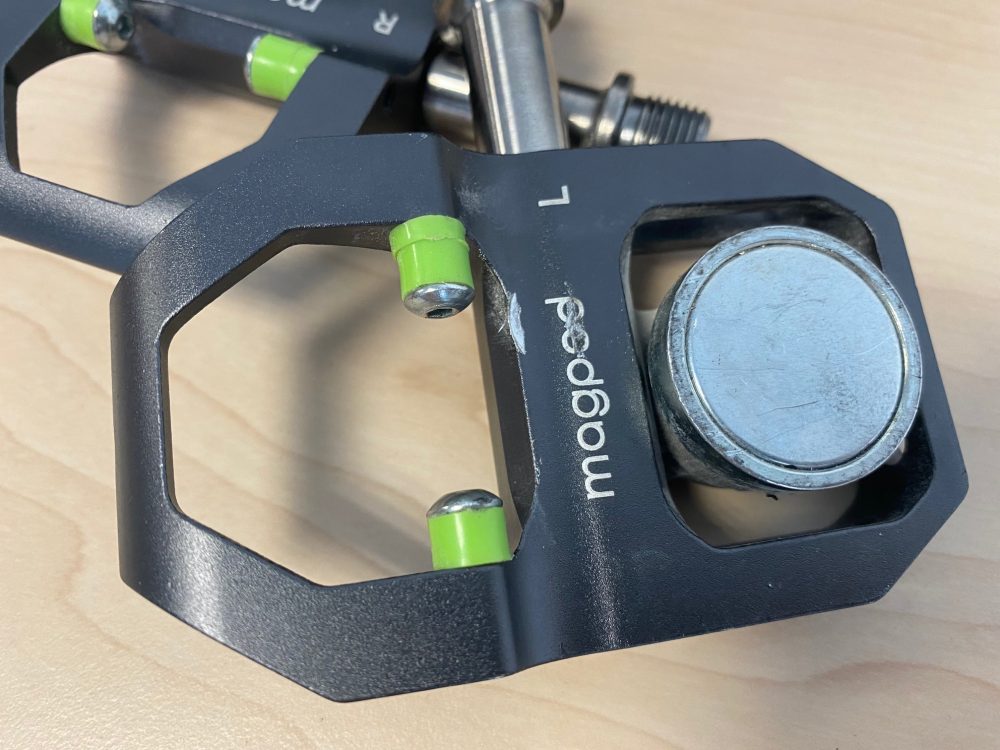Magped Road pedal review
Magnetic attraction is the appeal with Magped's road pedals

Magped's road pedal certainly brings a unique take to the clipless road pedal market. I can see the appeal for riders who have been put off the usual mechanically held systems and the execution is superb. However I can't help but feel that the system is a little flawed for the typical rider and the retention strength isn't enough to prevent me from being conscious and worried about accidental unclipping through a ride. For smooth, light spinners or new and nervous riders only.
-
+
Build quality
-
+
Simple retention and release
-
+
Adjustable float
-
-
Price
-
-
Slightly niche appeal
-
-
Not suitable for all riders
You can trust Cycling Weekly.

The 'clipless' road pedal system has seen very little change from its first widespread use a few decades ago. In itself it wasn't a new technology even then, just a rehash of existing ski bindings modified for cycling. Over time the design has been refined and adapted to create the pedals we use today, yet within the modern range the principle and retention style still remains the same. Magped, a small Austrian company, thinks it has created a viable alternative in the shape of its road pedal. The principle of a pedal and shoe based retaining cleat is the same but instead of a mechanical spring and clip holding things in place Magped's take utilises the power of magnets.
Take the pedals out of the box and the first thing that strikes you is how clean and minimal the CNC machined aluminium pedal body looks. It is, of course, overshadowed by the large neodynium magnet located at the rear of the body. This sits on an elastomer to allow it to move in all planes of direction, it can also be raised or lowered to alter the retention strength. On the inside of the front cut out are two threaded bolts that can be adjusted to change the amount of float each pedal provides and to which direction this float moves, much like the adjustment found on a Speedplay pedal cleat. Magped provide a few different width spacers that you can use to alter the float amount. The whole body sits on a high-end titanium axle that spins smoothly on three sealed bearings.

The cleat is made up of two parts: a thin steel plate that attaches to your shoe via the normal three bolt attachment and a plastic cap that screws directly onto the metal plate. This cap has a circular cut out that acts as a guide for the location of the pedal as well as front facing bump stop used to limit the float according to how you have set the pedals up. One thing to note is the plastic cap isn't as grippy as a normal cleat so care should be taken on slippery surfaces.
The best road shoes for clip in pedals
How does the Magped Road pedal work?
Clipping in to the Magped pedal is a breeze and relies on the same toe first technique as you would use clipping into a 'normal' pedal. Once the cleat is close to the magnet it locates easily into the recess and provides a snug connection. Releasing is even simpler and can be done by tilting your foot sideways, twisting in the usual way or by simply pulling your foot upwards. The magnet is claimed to produce 200Nm of force or the equivalent of a 15kg pulling force and it feels pretty forceful when locating the pedal.

Who is the Magped Road pedal aimed at?
The latest race content, interviews, features, reviews and expert buying guides, direct to your inbox!
Riding with the Magped system is a curious affair and one that warrants a little more explanation as to which riders I feel the Magped pedal is aimed at. Firstly I can tell you that the Magped is not aimed at power sprinters or riders who like to mash big gears - it can be too easy to pull the cleat away from the pedal when brute force is applied as I found out pretty quickly. If you are a rider who spins smoothly and tends to ride lighter gears at higher cadences then you will, in most cases, be fine on the Magpeds.
To this end I feel that these pedals actually make a great training tool for riders wanting to develop smoother, more consistent pedalling. The other group of riders that will benefit from the Magpeds are those who have been, up until now, averse to riding clip-in pedals whether due to being relatively new to road cycling or simply not liking the feeling of being 'locked' to the bike. For these riders the ability to release from the pedal in any direction plus the ability to vary the retention power will certainly appeal.

The only sticking point I can see with the Magped road is it sits towards the top of the budget for clipless pedals so will put off a lot of the riders who might actually benefit from the design. It would be good to see Magped produce a slightly lower tier version, lose the titanium axle and replace for a steel one would be a simple way of reducing cost without impacting performance.
Want to know more about the scores on our products? Read about how we score products here.
James Bracey's career has seen him move from geography teacher, to MBR writer, to Cycling Weekly's senior tech writer and video presenter. He possesses an in-depth knowledge of bicycle mechanics, as well as bike fit and coaching qualifications. Bracey enjoys all manner of cycling, from road to gravel and mountain biking.
